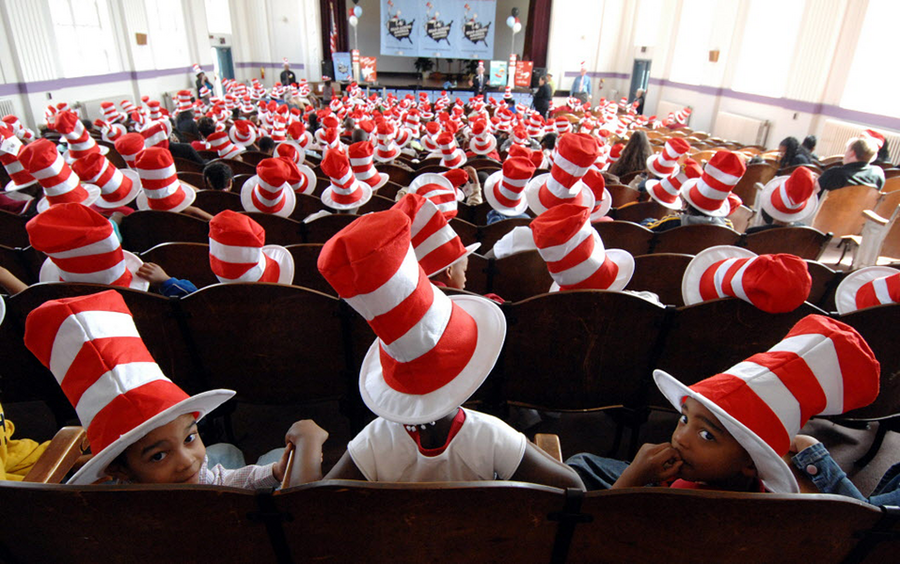Why Dr. Seuss's books still appeal to readers today
Loading...
March 2 would have been the 112th birthday of famous children’s book author Theodor Geisel, better known as Dr. Seuss, and the day is also celebrated as Read Across America Day.
As part of Read Across America Day, volunteers read works – often by Seuss – to schoolchildren and community figures and celebrities encourage children to pick up a book. The first Read Across America day was held in 1998 and was created by the National Education Association.
With his works such as “The Cat in the Hat,” “The Lorax,” and “Green Eggs and Ham,” among many others, Seuss became an icon in children’s literature. Many of his books have been adapted as films or TV shows, most notably the book “How the Grinch Stole Christmas!”
Denver Post writer William Porter wrote that Seuss’s birthday “has particular resonance for nearly every living American who ever learned to read.”
Part of the reason Seuss’s books remain so beloved, Mr. Porter writes, is the author’s unusual and memorable writing.
“All were models of craft, fusing a unique voice and artistic style,” Porter wrote of Seuss’s books. “… His books have introduced millions of children to the joys of reading and the magic of wordplay.”
Robin Blakely of the Examiner writes that authors of all genres today are still looking to Seuss’s work when they write their own titles. Blakely notes the themes of environmentalism in Seuss’s “Lorax” and how the author's way of presenting them can be modeled by others.
“That light touch combined with Dr. Seuss’s timeless way of seeing the world is exactly what continues to pique the interest of creative thinkers worldwide,” Blakely writes of Seuss’s way of tackling the issue.
As for why Seuss’s books have kept generations of readers coming back, Ann Neely, children’s literature expert at Vanderbilt University, said that Seuss’s style of writing draws readers in.
“His books, often filled with strange names and ‘political’ messages, demonstrate his heart in a way that allows the reader to read, repeat and even sing his words,” Neely said in an interview with Vanderbilt News. “This readability is a key part of the enduring power of Dr. Seuss literature. Children can read Dr. Seuss books many, many times without tiring of the rhythms, the plots or the art.”






